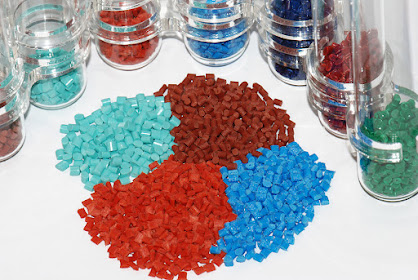Micro-molding Materials Market: Miniaturization Driving Major Material Advancements
Micro-molding, a specialized form of plastic injection molding, has revolutionized the manufacturing industry by enabling the production of tiny, high-precision components and products. The success of micro-molding processes heavily depends on the choice of materials, as these materials need to exhibit exceptional characteristics to meet the exacting demands of this technology. The micro-molding materials market plays a pivotal role in ensuring the growth and innovation of industries such as medical, electronics, and automotive. In this comprehensive analysis, we delve into the key trends, challenges, and prospects within the Micro-Molding Materials Market.
The Landscape of Micro-Molding Materials Market
Micro-molding is the process of creating small, intricate parts with micrometer-scale features. These applications are diverse and span various industries. Think of microelectromechanical systems (MEMS), micro-optics, microfluidics, and many more. Each of these sectors requires specific material properties to ensure the success of their micro-molding projects. This is where the micro-molding materials market comes into play, as it's crucial for manufacturers to select materials that can withstand the unique pressures and precision required in micro-scale manufacturing.
Key Market Trends
Miniaturization Across Industries
One of the prominent trends in the micro-molding materials market is the increasing demand for miniaturization across various industries. The consumer electronics sector, for example, is relentlessly pushing for smaller and more powerful components. In the medical field, micro-molded parts are crucial for minimally invasive procedures and advanced diagnostics. This trend is driving the demand for innovative materials that can meet the stringent size and performance requirements.
Biocompatible Materials
In the medical industry, biocompatible materials are a hot topic. Micro-molded components are being used in applications such as drug delivery systems, surgical instruments, and in-vitro diagnostics. Consequently, there's a growing demand for materials that are not only precise but also safe for use within the human body. This trend has led to the development of novel biocompatible materials, widening the scope of the micro-molding materials market.
Advanced Polymers
Polymers have always been the go-to materials for micro-molding due to their versatility, ease of processing, and cost-effectiveness. However, with the increasing complexity of micro-molded components, advanced polymers are becoming more popular. These materials offer improved thermal and mechanical properties, making them suitable for applications in extreme environments and industries like aerospace and automotive.
Challenges in the Micro-Molding Materials Market
Material Compatibility
Micro-molding is highly sensitive to material properties, and not all materials are suitable for this process. Manufacturers must carefully select materials that offer the right balance of strength, viscosity, and temperature resistance to ensure successful micro-molding. Material compatibility remains a significant challenge, especially when dealing with highly specialized applications.
Cost Considerations
The precision required in micro-molding often translates to higher manufacturing costs. Choosing the right materials that meet the desired specifications while staying within budget constraints is a challenging task. Manufacturers must find cost-effective solutions to remain competitive in the micro-molding materials market.
Research and Development
As the demand for micro-molded products continues to grow, research and development in the field of micro-molding materials becomes crucial. Companies must invest in developing new materials and improving existing ones to cater to the ever-evolving needs of industries. This requires substantial resources and expertise.
Prospects for the Micro-Molding Materials Market
The prospects for the micro-molding materials market demand are promising. As technology advances, new materials and manufacturing processes are likely to emerge, enabling even greater precision and efficiency in micro-molding. The miniaturization trend across various industries will continue to drive demand for innovative materials that can withstand the challenges posed by micro-molding. Additionally, growing awareness of the environmental impact of materials may lead to the development of more sustainable and eco-friendly options in the micro-molding materials market.
Conclusion
The micro-molding materials market is an integral part of the micro-manufacturing landscape. It serves industries that require miniature, high-precision components, and products. The market is driven by trends such as miniaturization, biocompatibility, and advanced polymers, but it also faces challenges related to material compatibility, cost considerations, and the need for ongoing research and development. Nevertheless, the future of the micro-molding materials market looks promising as it continues to adapt and innovate to meet the evolving demands of various industries.


.png)

Comments
Post a Comment